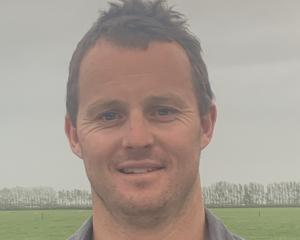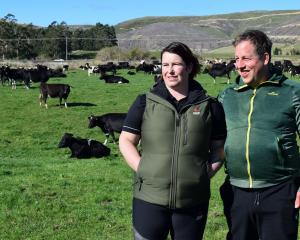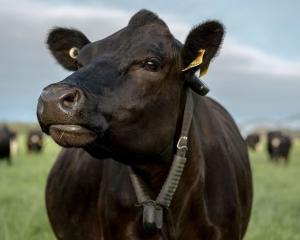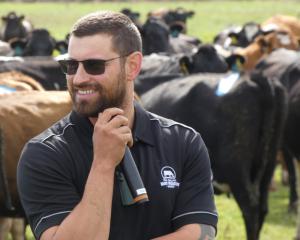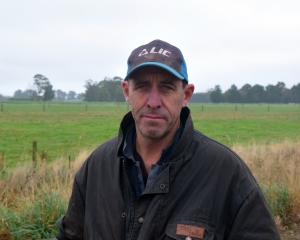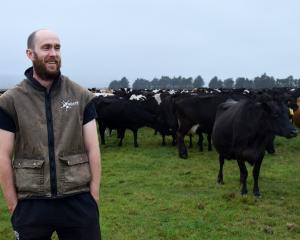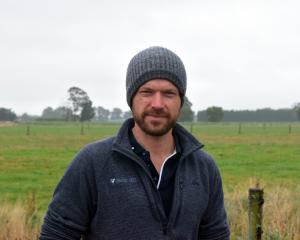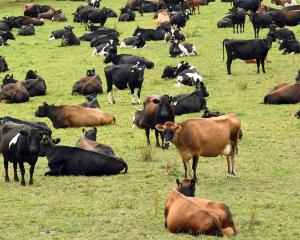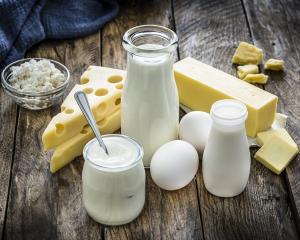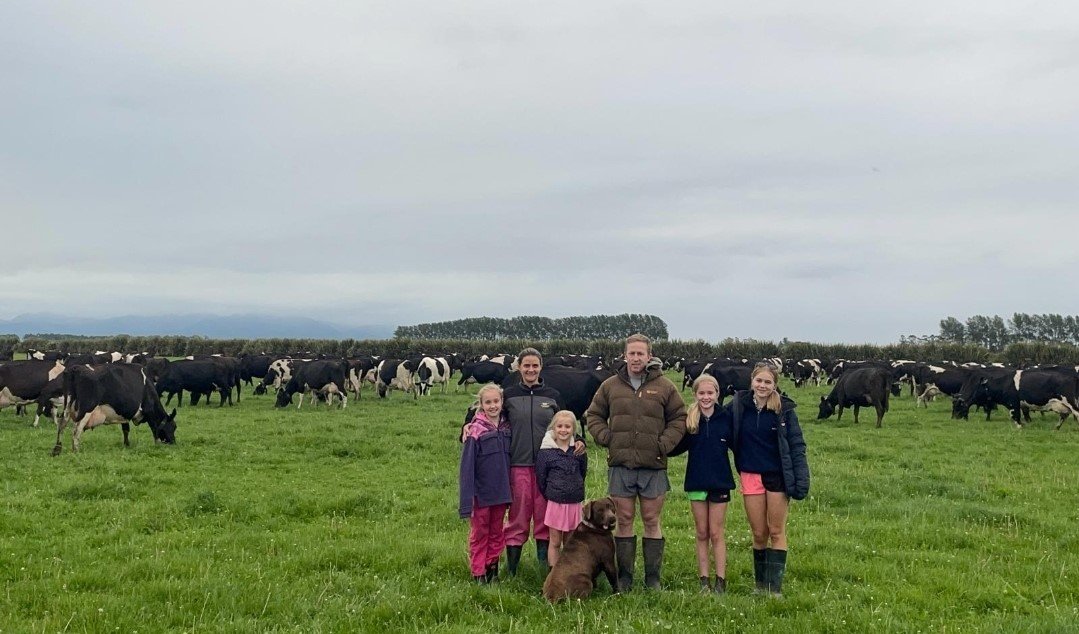
He and wife Hanneke Ferreira-Blair run a 930-cow herd at peak milking at Sebakwe Farming between Ashburton and Geraldine in the Lismore area.
The couple had always wanted to take some of the pressure of long cow walks to the milk shed for staff and invested in Halter’s smart collars partly to achieve this and to become more efficient in other areas.
Mr Blair said morning rosters had been pushed back since taking on the collars about 18 months ago and they had halved cow lameness.
"We’ve got some long walks here and for the boys to milk at 5am they had to be getting up at 3.45am for cups on. Obviously, Halter gets the cows out to the paddocks so the boys just turn up 10 minutes before milking now. They get an extra hour or so in bed in the morning, and they’re not rushing to lunch because they don’t have to come back to get the cows. So there’s two hours saved a day following cows."
The Blairs have managed to trim one labour unit as a result of the solar-powered and GPS-guided collars.
The team’s down to three full-timers plus a relief milker/calf rearer with Mr Blair overseeing the business.
Other savings have been less wear and tear and maintenance on motorbikes and less fuel consumed.
A major benefit has been more efficient kale feeding.
The 300ha property with a 284ha milk platform is fully irrigated on the Mayfield Hinds Valetta scheme with three centre pivots and K-line irrigation.
Next season they plan to milk 960 cows after being on target to produce 486kg of milk solids per cow on pasture and 700kg of supplement feeding.
They will winter 980 mixed-age cows over the road at their neighbours’ property on kale with the rising 2-year-olds retained at Sebakwe, also on kale.
Mr Blair said they had made their money in Halter from better feeding and wasting less grass and kale.
"Usually in winter on a Monday we cut 28 breaks for the four herds and that gets us through for the following Monday. So you take the tractor over, two staff members and you’re shifting reels each day, but the big thing is you cut those 28 breaks on the Monday to Monday and the crop, yield and dry matter changes and then all of a sudden the cows start leaving too much so therefore you’re faced with: Do I take the tractor back over and make the breaks shorter? Generally you’re on a 200m face with 250 cows on a 15-tonne crop of kale per hectare and we are only giving them sort of 12m to 15m and you’re using a 1.5m grab to cut those breaks and you don’t really want to go and shorten your 12m break by 3m because you’re just running over kale that you don’t need. So what we do with Halter is we just give them four or five small breaks a day and utilisation goes way up."
As a result, he estimates they’re saving about 2kg of dry matter per cow a day over winter — worth about $50,000 a year.
Plus they will reduce their palm kernel consumption by about 300 tonnes worth about $95,000 and some baleage.
Mr Blair said the savings alone had offset Halter’s Pasture Pro programme costs of $14.50 per cow per month at a total of $155,000.
"If you also factor in all those small amounts like fewer bike trips it’s worthwhile, plus we increased our six-week in-calf rate by 6% and our empty rate dropped from 17% to 12%, so that’s a lot of extra cows we can cut if we want. That six-week in-calf rate increase I think was another $70,000 in the bank."
Their six-week in-calf rate now stands at 75%.
He said a fair bit of this came down to the technology because of feeding improvements.
"Feeding with Halter you’re so much more accurate. With Halter you’re not restricted by reels and you can go into a break and just give them a small amount and then just give them a little bit more to encourage them to eat. But your [pasture] residuals are better too because you’re not setting up paddocks two to three days ahead and all of a sudden, you’ve left too much on the second break and have to go out and change all the reels. You don’t tend to do that with Halter. You just draw a smaller break the next one in your app and you have the accuracy because it’s measuring each break in the paddock and cover."
He said the cows picked up the collar’s directions quickly and even the heifers were trained within three days.
"When Halter was selling it to me at the start they said the cows will be so much quieter and I thought ‘that’s a sales pitch’, but they actually are. The way they graze in a paddock they’re not looking for a reel and they just eat their way into a paddock and come to the shed really happy as they don’t have a staff member on a bike disturbing them. They just get that beep and alert to walk to the shed. With that 30-millimetre rain we had the other day they don’t go stand in the corner because there is no reel like they normally would in a weather event and they’re spread out and you’re not destroying areas of your paddock."
Mr Blair said a 57-year-old staff member who had been dairying all his life was in his first season with collars and planned to stay on to retirement because they made work easier.
During calving they can be managing nine mobs on as many breaks and normally setting up fences is a job lasting from after breakfast to lunch.
"Now we sit there in breakfast, have a coffee and set the breaks up and all the cows are fed while we are having breakfast and all the cows are set up for the next shift. It’s a huge amount of time saving."


